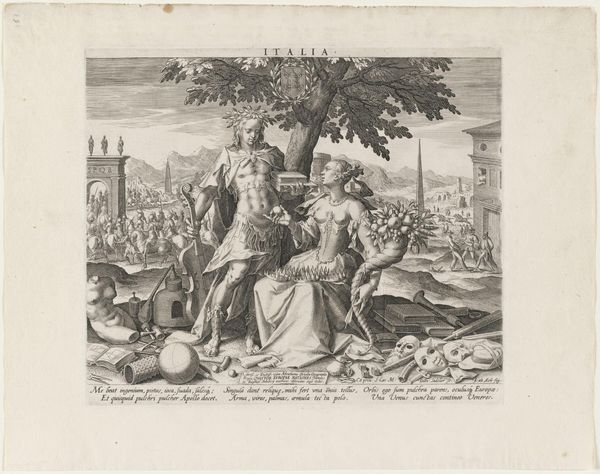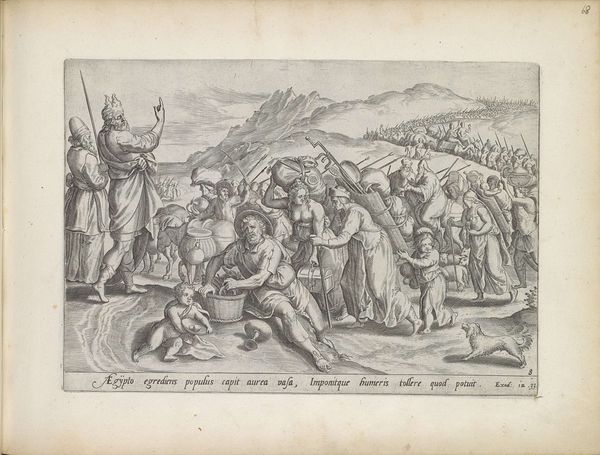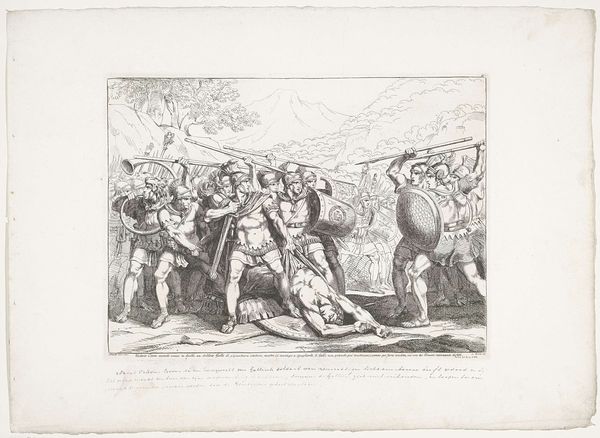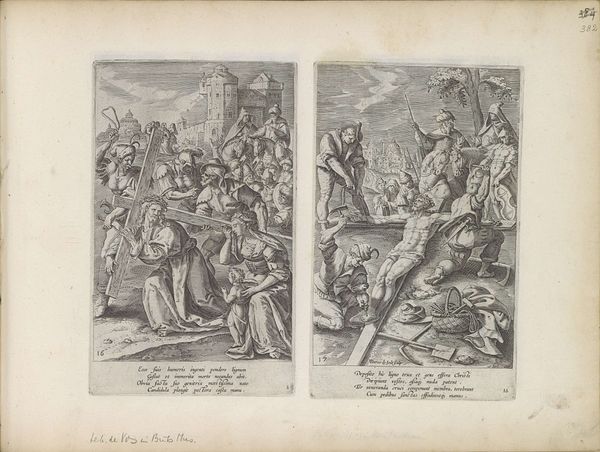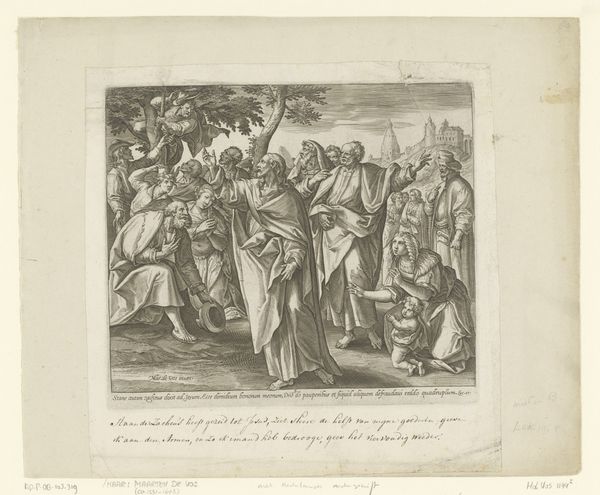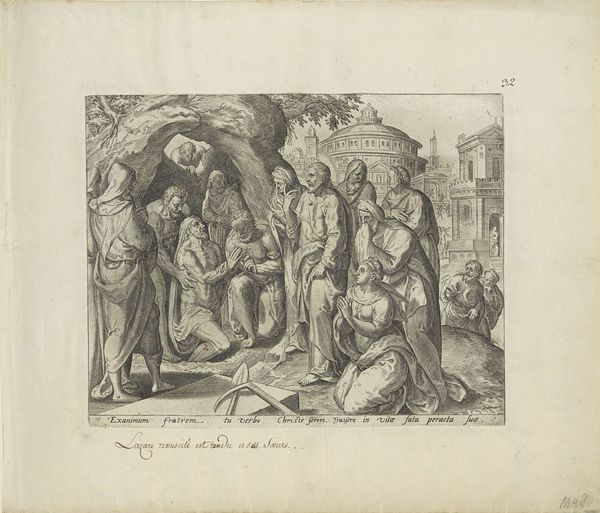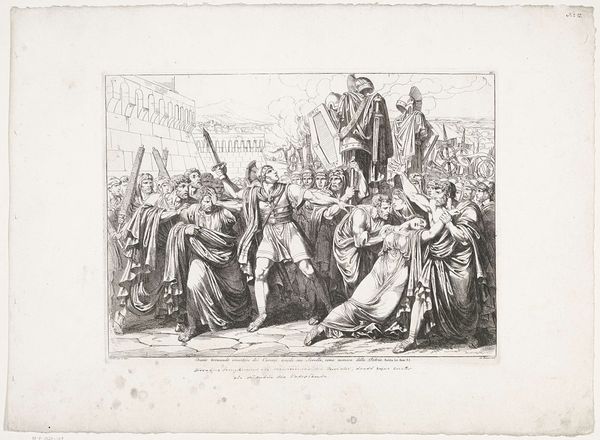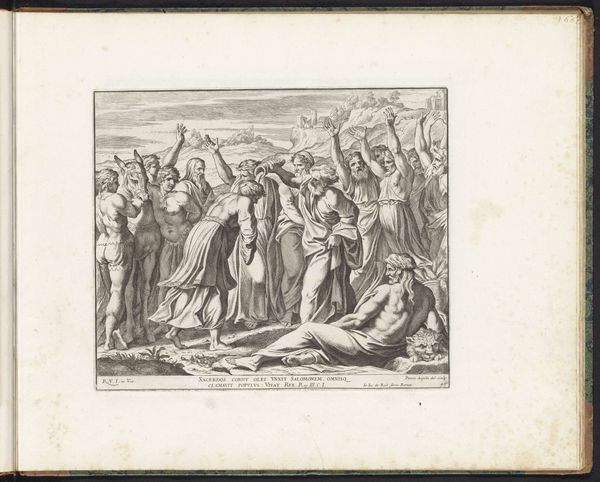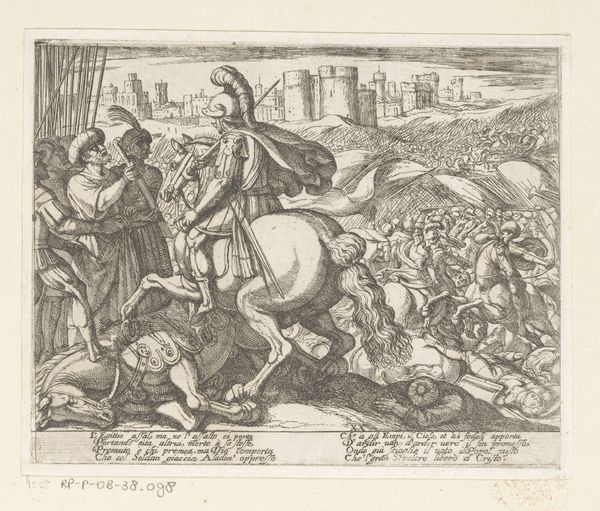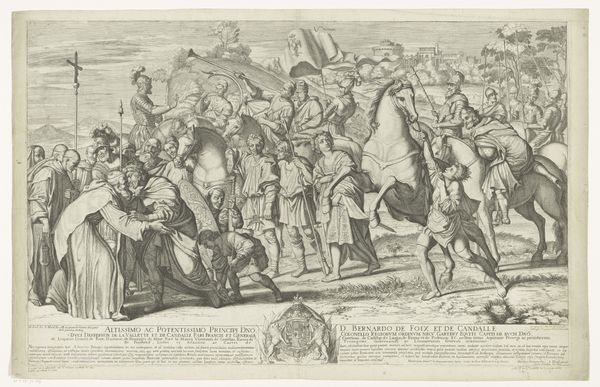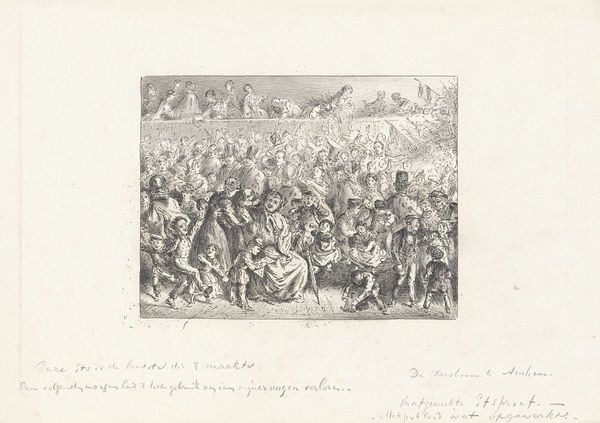
print, engraving
#
narrative-art
# print
#
old engraving style
#
mannerism
#
figuration
#
line
#
history-painting
#
engraving
#
christ
Dimensions: height 210 mm, width 254 mm
Copyright: Rijks Museum: Open Domain
Curator: This is "The Multiplication of the Loaves and Fishes," an engraving made sometime between 1579 and 1585. It is currently held here at the Rijksmuseum and is attributed to Wierix. The work beautifully captures a pivotal moment in the Gospels. Editor: My initial reaction is how meticulously rendered this engraving is; the sheer density of figures, each carefully articulated with delicate lines. Curator: Absolutely. As a print, think about the technical skill and the repetitive labor involved in its production. The making of this piece, through engraving, made possible a far wider distribution of imagery. Who would have owned this, consumed this imagery, and what purpose would it serve? It blurs the lines between art object, devotional aid, and even a form of early news dissemination. Editor: Considering Wierix was active during a period of intense religious conflict, the Reformation and Counter-Reformation, it’s crucial to acknowledge that this isn't just an illustration, it’s a loaded religious and political statement about abundance and divine intervention amidst scarcity. We see the feeding of the multitude; that collective moment when differences, hierarchies, and everyday anxieties may have been leveled by communal experience and consumption. Curator: Yes, but think also about Wierix himself. Here's a skilled artisan deploying his expertise, perhaps catering to the tastes and ideological needs of a patron. He would need access to specialist tools, metals, inks, and presses—all of which represent resources. We need to contextualize Wierix within his local community to assess his contributions to it. Editor: Examining how this image might function for a 16th-century audience versus its contemporary significance becomes even more revealing. Its value hinges on interpretations, lived experiences, socio-economic realities—are we drawing connections between access and the ability for collective action, or simply observing another version of traditional savior narratives? Curator: Precisely. The materiality of the print—the paper, the ink—and the labor behind its creation must ground our theoretical explorations. Editor: Ultimately, engaging with this engraving compels us to consider representation as a function of and commentary on societal structures and values. Curator: And I hope to also spark dialogue around its role in early printmaking and economy of artisanal practices.
Comments
No comments
Be the first to comment and join the conversation on the ultimate creative platform.
